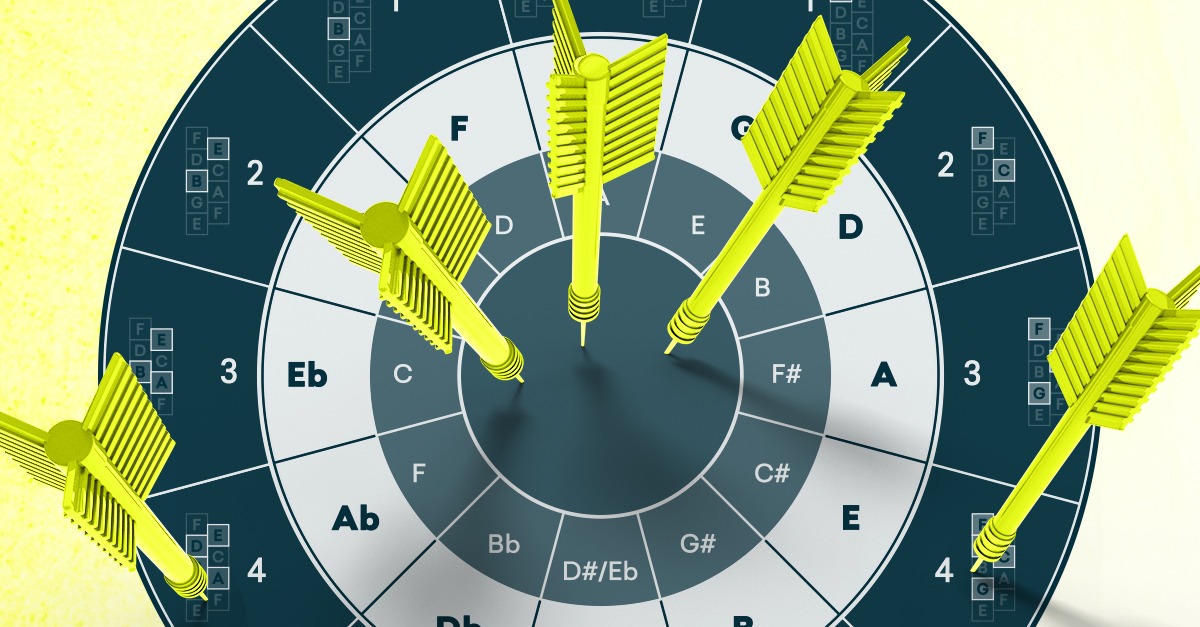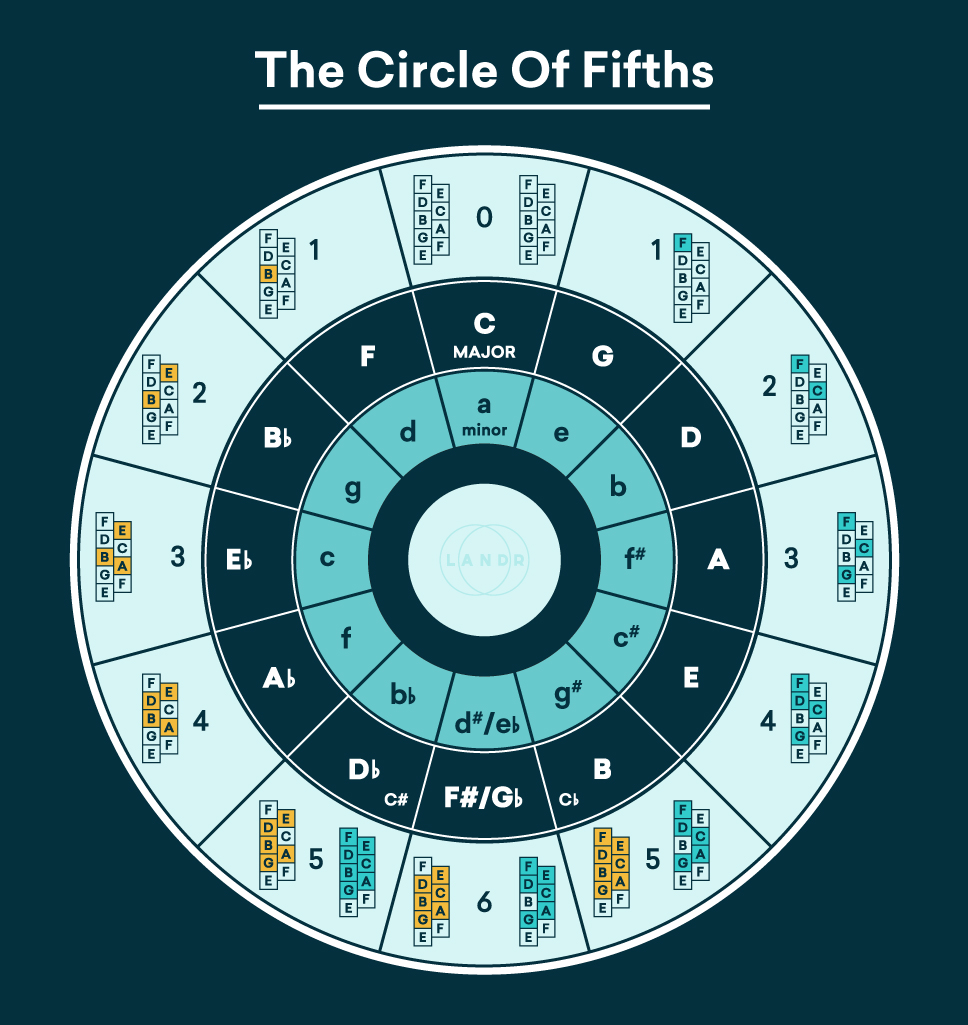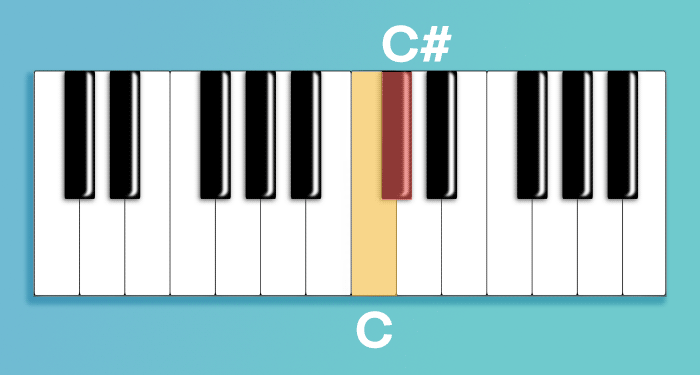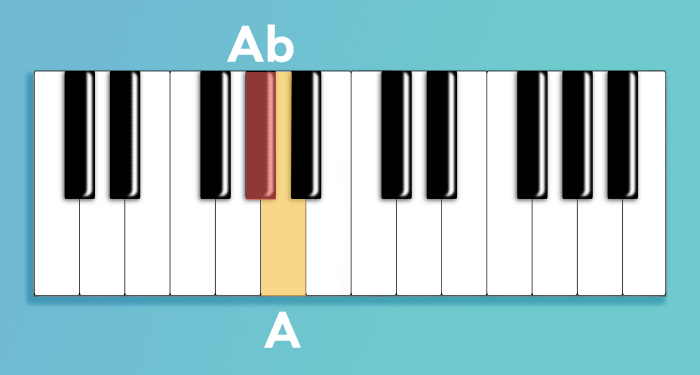
Circle of Fifths: What It Is and How to Use It

The circle of fifths is your road map to the twelve musical keys.
The term might sound like a dry music theory lesson, but the circle of fifths is one of the most useful concepts to learn in music.
It will help you remember key signatures, situate yourself on your instrument and unlock creativity with chords and progressions.
With such a practical concept, it takes a bit of background to understand it right. But that doesn’t mean it has to be confusing or difficult.
In fact, all you really need to know is the basics to get started with the circle of fifths.
In this article I’ll explain what it is, how it works, and how it can help you make music.
Let’s get started.
What is the circle of fifths?
The circle of fifths is a visual tool in music theory that illustrates the relationships among the twelve musical tones of the chromatic scale. It’s used in music to help remember the notes that make up each key and group similar keys based on the notes that they share. Following the steps of the circle in order will also give you the order of sharps and flats for writing musical scores. It’s called the circle of fifths because each key is arranged a fifth interval away from the next on the circle. The circle of fifths is a way to visualize the twelve musical keys and put them in a convenient order.
If that sounds tough to visualize, let’s clear it up with an infographic:

The circle of fifths is a visual tool that helps musicians understand the relationships between different musical keys and their key signatures. Imagine a clock where each hour represents a key:
At the top (12 o’clock), you have C major, which has no sharps or flats.
Moving clockwise, each key is a perfect fifth higher than the previous one and gains one sharp in its key signature. For example:
1 o’clock: G major (1 sharp)
2 o’clock: D major (2 sharps)
3 o’clock: A major (3 sharps)
…and so on.
Conversely, moving counterclockwise from C major, each key is a perfect fifth lower and gains one flat:
11 o’clock: F major (1 flat)
10 o’clock: B♭ major (2 flats)
9 o’clock: E♭ major (3 flats)
…and so forth.
This arrangement helps musicians quickly identify key signatures and understand how keys are related, making it easier to compose, transpose, and improvise music. Additionally, each major key has a relative minor key that shares the same key signature; for example, A minor is the relative minor of C major.
What is the history of the circle of fifths?
The circle of fifths, a fundamental concept in Western music theory, has evolved over centuries through the contributions of various scholars and musicians.
In the 6th century BCE, the Greek philosopher Pythagoras explored the mathematical relationships between musical intervals. He discovered that dividing a vibrating string in half produces an octave and that other divisions yield consonant intervals, such as the perfect fifth. However, there is no concrete evidence that Pythagoras conceptualized the circle of fifths as we understand it today.
The first known depiction of the circle of fifths appeared in 1677 within the treatise “Grammatika” by Ukrainian composer and theorist Nikolay Diletsky. Aimed at teaching composition in the Western polyphonic style, Diletsky’s work introduced the circle as a tool to understand key relationships and modulations.
In 1728, German composer and music theorist Johann David Heinichen presented an updated version of the circle in his treatise “Der General-Bass in der Composition.” Heinichen’s “Musical Circle” further elaborated on key relationships and their practical applications in composition.
These developments by Diletsky and Heinichen significantly influenced the understanding and use of the circle of fifths in music theory, providing a visual representation of the relationships among the twelve tones of the chromatic scale and their corresponding key signatures.
Background info—notes and keys
If you’re already got the basics of music theory down, feel free to skip ahead to the next section.
But if you’re new to it you’ll need a quick recap of the fundamentals to get the most from this article.
Keys in music
A musical key is the group of 7 notes that forms the basis of a musical composition.
Using the notes inside the key in your chords, melodies and progressions will ensure all your musical elements sound pleasing together.
The key signature is the set of accidental symbols that defines which pitches are included in the key. There are 12 of these—one for each key on the musical keyboard.
Accidentals
The octave is divided into equal tempered semi-tones, but there are only six notes in the musical alphabet.
Accidentals are the symbols used to alter the letter pitches by a semitone up or down.
For example, adding the # symbol to C will create C#—one half-step higher.

And adding the flat symbol to A will create Ab—one half-step lower.
The key signature is the set of accidental symbols that defines which pitches are included in the key.

That might seem confusing, but remembering which accidentals are required for which keys is a big reason musicians use the circle of fifths.
How does the circle of fifths work?
The circle of fifths arranges the musical keys by the number of accidentals in their key signatures.
Moving right on the circle
If you’ve heard some music theory basics you probably know that the key of C major contains no sharps or flats.
If you start with the key of C major and move up by a fifth, you’ll land on G major.
🧠 Hot tip
The key of G major contains a single accidental—F#. As you continue moving clockwise by fifth intervals around the circle, you’ll add a sharp with each step.

How do you know which sharp to add? That’s on the circle as well!
The order of sharps starts one step to the left of C major and follows the same pattern, although most musicians remember it with a mnemonic.
The one I use is: Father Charles Goes Down And Ends Battle
Moving by fifths and adding a sharp each time will give you all the keys that contain sharps in their key signature—up to C# major with its whopping 7 sharps!
The circle of fifths arranges the musical keys by the number of accidentals in their key signatures.
Moving left on the circle
So far we’ve covered the sharp keys, but what if you want to play in Bb major?
To find the keys with flats on the circle of fifths you’ll start the same way at C major, but move counterclockwise instead.
This time you’ll move down by a 5th and add a flat at each step.

You can use the same mnemonic to remember the order of flats, which conveniently makes sense in reverse—Battle Ends And Down Goes Charles Father
In our example, to find Bb you’ll have to move left two steps, adding two flats to the key signature—Bb and Eb!
You can continue like this all the way to Cb major which contains 7 flats.
🧠 Hot tip
Minor keys on the circle of fifths
So far I’ve covered all the major keys you can build with sharps and flats in the key signature.
Next up are the minor keys.
Luckily, there’s nothing new to learn here since the minor keys all have a relative major that shares the same key signature.
You can use the same method of moving left and right by fifths while adding sharps and flats if you start in the right place.
Here’s what I mean. The relative minor of a major key is the scale that begins on scale degree six of the major scale.
Simply follow the key signature of the major key and count up six scale degrees to find its relative minor.
Simply follow the key signature of the major key and count up six scale degrees to find its relative minor.
In C major, that means that A minor is the relative minor key. These keys share the same key signature that contains no accidentals.
The same holds true for the rest of the relative minors. That means that if you arrange the minor keys around the circle the same way beginning on A, you can easily find the key signatures.
For example, take the key of F# minor. To find the signature, move clockwise on the circle by three steps adding sharps each time. You’ll end up with F#, C# and G#—same as the relative major key of A major!
How to practice the circle of fifths
If you’re feeling convinced that learning the circle of fifths will benefit your music, you might be looking for an effective way to practice it.
After all, you won’t have a visual infographic in hand at all times while playing music!
As I mentioned before, you can always work out the circle of fifths if you sit down at a piano and move through it deliberately.
But if you want to know it cold, you’ll need to incorporate it into your practice routine.
Here are some ideas to help you learn the circle of fifths on your instrument.
1. Make a visual aid
The circle of fifths is a diagram, shouldn’t that be enough? Not always!
Adding your own markings for fingerings, tablature or helpful notes can help spur your memory as you practice.
With such an abstract concept you may find you need your own prompts to commit it to muscle memory.
2. Choose exercises that visit all 12 keys
One of the most foundational skills of musicianship is fluency in all 12 musical keys.
It means feeling just as at home in Ab minor as you would in C major.
As a result, there are many instrumental practice routines that focus on warming up and playing in many different keys.
For example, it’s popular for jazz musicians to tackle the classic ‘Rhythm Changes’ standard progression in all 12 keys as an early milestone in their education.
Many exercises like this arrange each successive key according to the order of the circle of fifths.
That way musicians know they can progress through each key by adding only one accidental at a time—a great way to internalize the circle!
3. Don’t write in the same keys every time
If you’re a songwriter, you’re likely used to writing in a few familiar keys that help you keep your creative flow going.
You probably even have established chords and voicings that you rely on inside those keys.
So what happens when you shake it all up and try a new key?
It can take some extra time, but you might be surprised at the results.
For instruments with common chord shapes like guitar, changing keys can force you to find different approaches to chords and lines that unlock creativity.
You may even find it easier to sing in a register you may not have used before.
The circle of fifths will help you stay oriented in the new key and find your way around.
How to use the circle of fifths in your music
So far this explainer might seem theoretical, but there are plenty of ways to apply the circle of fifths in real life.
Here are just a few ways it can work in your music.
Find out where you are
When you’re improvising music, jamming with a friend, or trying to play along to a song, the first thing you’ll need to know is the key.
That way you’ll know which notes to play and which chords have the most important harmonic functions.
There are multiple ways to find the key, including a super handy automatic method if you’re working in a DAW.
But with a little ear training, most musicians can easily identify the tonic (or scale degree 1) due to its stable sound and sense of harmonic “home.”
Once you have the tonic, you can fill in the rest of the notes by remembering the sharps and flats in the key signature with the circle of fifths.
Change keys
Plenty of great songs stay in the same musical key throughout. But others make use of a dramatic technique called a key change or modulation.
Some songs modulate directly to a new key for fresh sound after a repeated section.
But others change keys smoothly by moving to a related key.
The circle of fifths gives you clues about which keys share the most DNA. If two keys are next to each other on the circle, their key signatures differ by only one accidental!
This means changing between them won’t sound jarring for listeners.
🧠 Hot tip
Borrow chords
Once you’ve played around a bit with the diatonic chords, you might want to branch out a bit.
Some of the most interesting chord progressions feature chords brought in from outside the home key.
These are called borrowed chords and they can add excitement and uniqueness to a song.
Borrowed chords come most often from keys that are related to the home key. For example, the most commonly used secondary dominant chords are V7/V and V7/IV. These come from adjacent keys on the circle of fifths.
But no matter which keys your borrowed chords come from you’ll still need to build and spell them properly to use them. You can’t do that without knowing the notes of the keys where they appear!
Circular logic
The circle of fifths is taught everywhere in music education.
While it may sound like a boring technical detail, it’s a foundational concept that can help you find your way around the basics of music theory.
Whether you’re looking to feel at home on your instrument, jam along with your friends or find fresh chords, learning how it works will help build your skills.
Gear guides, tips, tutorials, inspiration and more—delivered weekly.
Keep up with the LANDR Blog.





